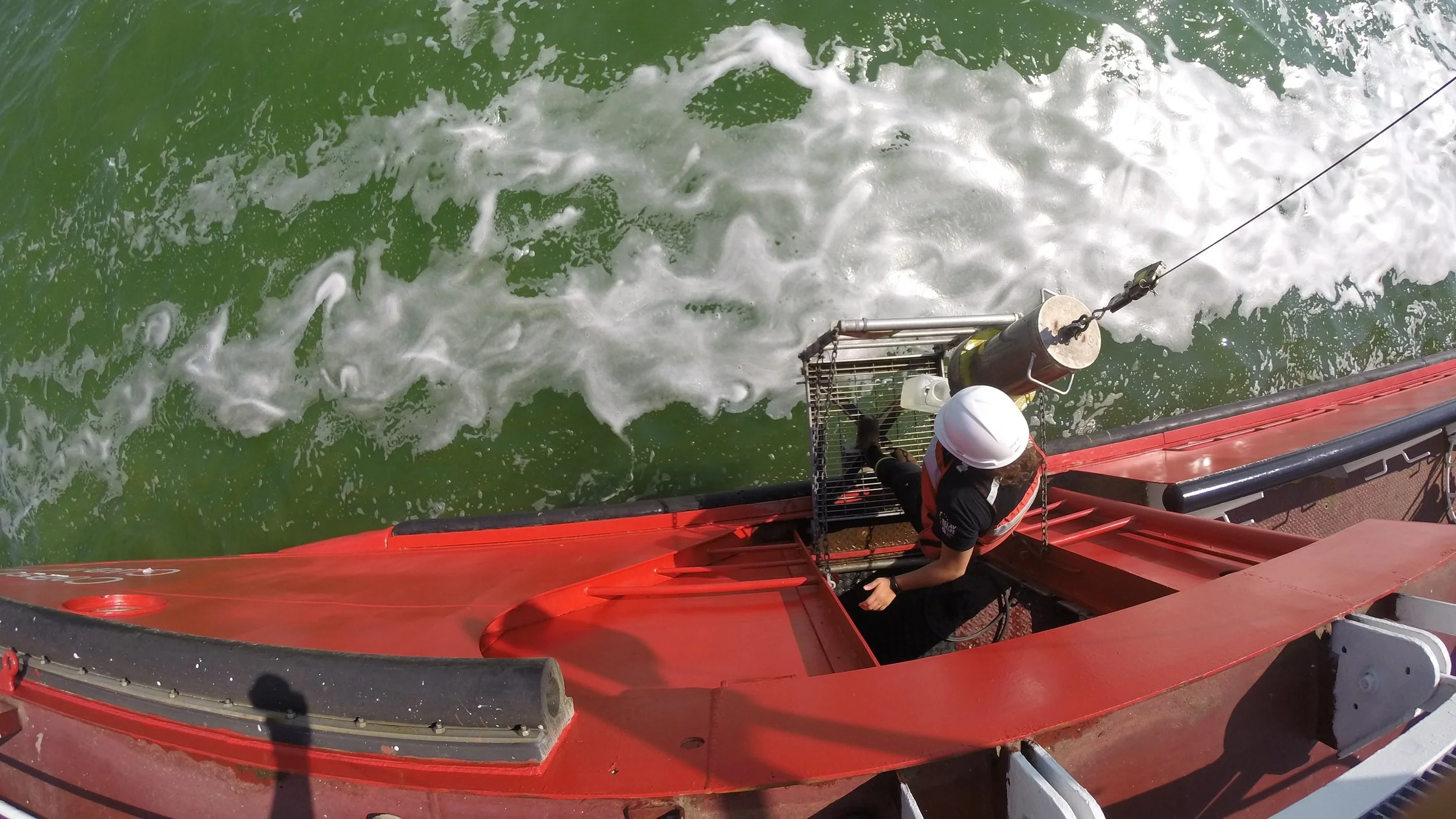
Virtual Stone Lab Field Trips Bring Lake Erie to Ohio Classrooms
Ohio Sea Grant and Stone Lab now offer virtual field trips for students and teachers in grades 4-12.

Ohio Sea Grant Extension and Stone Lab Develop New Education Tools
A Great Lakes Aquatic Invasive Species (AIS) Lesson Plan, along with Trash Trunk and Trash Tote outreach kits focused on marine debris and plastic pollution, bring real-world science and conservation efforts into classrooms and other education facilities.
Zoom-ing Through Research Projects
Stone Lab’s Research Experience for Undergraduates (REU) Scholarship Program goes virtual amid COVID-19 precautions.

That’s a Wrap
The Ohio Clean Marinas Program produced an instructional video for shrink-wrap recycling.

Working for Ohio
The Harmful Algal Bloom Research Initiative addresses harmful algal blooms in Ohio from all angles.
Sea Grant Microbiology Research Supports Ohio Aquaculture
Ohio Sea Grant researchers at Bowling Green State University are helping fish farmers keep their animals healthy.

How Much Is Too Much?
People living around Lake Erie are quite familiar with algal toxins – harmful algal blooms are a near-yearly occurrence, and those blooms can produce toxins that need to be removed from drinking water drawn from the lake. Researchers at The University of Toledo are now setting their sights on another potential set of contaminants.

There’s Something in the Water
Lake Erie is a vital resource to Ohio, supplying drinking water, recreational opportunities and employment to millions of people. The lake is weathering its fair share of problems, from harmful algal blooms to industrial pollution, but it also faces new potential threats to its health. One of those threats is quickly gaining more attention from scientists, and it’s also one that residents can play a large role in addressing: contamination from pharmaceutical products.

Putting a Lid on Plastic Pollution
The town of Put-in-Bay on Lake Erie’s South Bass Island is a popular tourist destination during the summer, hosting as many as 750,000 visitors every year. That’s great for the local economy, but all those people also bring something else to the island: lots and lots of plastic.
Ohio Sea Grant Extension Educator Jill Bartolotta and Stone Laboratory Education & Outreach Assistant Sue Bixler have estimated that Put-in-Bay tourists could eliminate 2.81 million plastic straws, 2.81 million plastic bags and 3.75 million plastic bottles a year by choosing reusable alternatives like metal water bottles and canvas bags. A two-year outreach project, with funding from NOAA’s Marine Debris Program, is aimed at encouraging those reusable alternatives both on the island and back at home.

Science on the Shallowest Great Lake
Put-in-Bay teacher Melissa Kowalski brought hands-on Lake Erie science back to her classroom after a week on the U.S. EPA's R/V Lake Guardian.

Nitrogen Trackers
Researchers at Wright State University hone in on the role of nitrogen in harmful algal blooms and toxin production.
Life and Science on the High Seas
Extension educator Jill Bartolotta traveled aboard the NOAA Ship Okeanos Explorer as part of the Teacher at Sea program.

Power Up
Ohio Sea Grant's Solar Technology Curriculum gives students a look at renewable energy technologies.

Taking Care of Business
Ohio Sea Grant Extension Specialist Joe Lucente helps local economies thrive in coastal communities.
Something For All Ages
Summers on South Bass Island are busy… really busy. More than 800,000 guests visit the island and the town of Put-in-Bay every year as part of their summer vacations, and Ohio Sea Grant and Stone Lab are ready to add just a touch of Lake Erie science and history to the memories tourists take back home.
Teaching Teachers
Ohio Sea Grant has a long tradition of developing curriculum for teachers and other educators. Its first formally funded research project was an education project, and giving teachers effective ways to help their students learn about the Great Lakes has continued to be a cornerstone of Sea Grant’s mission ever since.

Community Connections
The Ohio Sea Grant Extension program connects the needs and concerns of Lake Erie communities with the people who can help address those needs, bringing new knowledge to their stakeholders through education and outreach programming and finding new ways to address problems through research and publications.

Round 'Em Up
Northern Illinois University’s Dr. Rich King and Stone Lab’s Dr. Kristin Stanford played an instrumental part in the recovery of the native Lake Erie Watersnake.
Growing, for Science
Stone Lab, Ohio Sea Grant’s research and education facility on Lake Erie, has been a home for researchers studying the lake for over a century. Over the years, upgrades and renovations have made sure that the lab keeps up with modern science needs, but of course there’s always more that could be done to make sure Stone Lab continues to be a resource for everyone studying Lake Erie.
At the Forefront of Lake Erie Science
Water quality continues to be a top concern for Stone Lab staff and visiting researchers. A state-of-the-art Algal and Water Quality Lab houses water testing for nearby treatment plants, supports research into the lake’s harmful algal bloom problem and offers student research assistants a chance to get hands-on experience in the lab.